 medium.com/@alddomolinar?source=rss-454e69f36424------2
medium.com/@alddomolinar?source=rss-454e69f36424------2
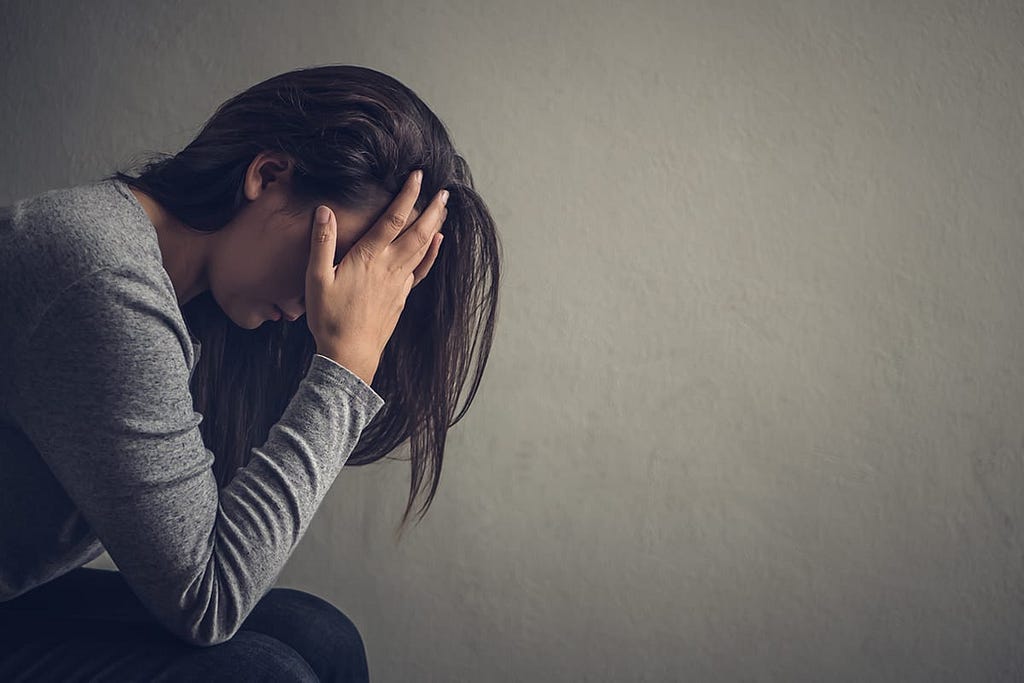
Mental illness is not easy to deal with. When a person is suffering from issues like depression, anxiety, and personality disorders, we may feel it’s up to them to get the help they need, but it’s difficult for them to move forward without the support of their families or close friends.
And beyond supporting their loved ones, it’s also important for family or close friends to be integrated into the therapy process. This will help them understand how they may be contributing to their loved one’s issues and what they can do to provide the care their loved ones need.
This article will review a family’s role in mental illness and what you can do if someone you are close to needs help.
Parents Affect Their Children’s Mental Health
A person’s actions can affect all family members, but a parent can typically have the most significant impact on children who are going through their formative years. There are many adverse experiences that can cause a negative reaction in children, including:
● Growing up in an abusive home, whether they are the victim of abuse or whether other people in the home are being abused
● Witnessing violent acts in the home or community
● Substance abuse problems
● Parents going through a divorce or separation
● Parents with mental health issues — these can affect the way the parent cares for the child, and disorders can be passed down to children
● A family member who is incarcerated
● A family member who commits or attempts to commit suicide
According to the National Survey of Children’s Health, one in three children under 18 will deal with at least one adverse childhood experience that can affect their mental health. 14% deal with multiple adverse experiences.
Parenting styles can also affect a child’s mental health. Parents who are overprotective can cause children to become stressed when they need to handle situations independently. Similarly, using a critical, dismissive tone on children can cause self-esteem issues that lead to anxiety and depression.
In other instances, children with overprotective parents may become curious about what they are being protected from, and they may take things in the opposite direction. For example, if a parent is overly afraid their child will try drugs and alcohol, it may cause the child to become curious to explore why their parent is fearful by trying out a drug to “see how it feels,” which could be a gateway leading to further substance abuse issues.
Other Examples of Mental Health Issues in Families
While children are especially susceptible to adverse experiences that may affect their mental health, they aren’t the only ones that may experience mental health difficulties.
Abuse can occur to any member of the family. There may be spousal abuse or elderly abuse happening in the home that can lead to trauma, depression, and anxiety.
In other instances, the stresses and responsibilities of daily life may get to be too much. A family member may be feeling overwhelmed due to having to support a family or care for an older relative and may develop anxiety and anger issues as a result.
It’s also not uncommon for a family member to be born with a mental disorder due to a chemical imbalance. If the disorder is inherited from another family member, it may be increasingly hard to maintain harmony in the household.
How to Help a Loved One Dealing with Mental Illness
If you have a family member or friend dealing with a mental illness, it’s vital that you get them the help they need. This will be the healthiest thing for your loved one, yourself, and your family.
Here are some steps you should be taking in providing support:
● Know the signs of mental illness: It’s important to be aware of the signs of mental illness so you can get your loved one help as soon as possible. Symptoms include changes in sleep and appetite, withdrawal from society, and a disinterest in doing the things that they once loved.
● Talk to Your Loved One: Talking to your loved one about their mental health can be one of the hardest things to do. When you approach them, show care and patience and don’t be judgmental about their feelings. Please encourage them to talk to a mental health professional and make it as easy as possible to get the care they need.
● Seek Support for Yourself: Dealing with a loved one with a mental illness can take an emotional toll. You may feel angry, impatient, and generally stressed. Make sure to keep your own mental health in check. Therapists often integrate family therapy which helps family members or partners learn the best coping strategies for caring for their loved ones and themselves.
Conclusion
Social support plays an essential role in a person’s mental health. The actions of family members or close friends can reduce stress, depression, and trauma or could contribute to it. However, continued support and encouragement helps ensure loved ones get the care they need.
Look out for the people you love to help them enjoy a high quality of living and emotional well-being.

When it comes to diagnosing and treating mental health issues, we typically think of medications and forms of psychiatric and psychological therapy. But now, a type of imaging, called brain mapping, is also making waves in the medical field.
Brain mapping is a procedure that measures electrical activities in the brain. It uses several neuroimaging techniques including electroencephalography (EEG), functional magnetic resonance imaging (fMRI), and magnetoencephalography (MEG) to produce images. Providers study the images created to identify abnormal activities and come up with treatment methods best suited to the patient’s needs.
Read on to find out more about brain mapping and how it is advancing mental health treatment.
Brain Mapping History
The first brain mapping studies were conducted by scientist Paul Broca in the late 1800s. He had been observing stroke victims who experienced damage in the speech centers in the brain. His research led him to believe that distinct parts of the brain controlled specific regions in the body.
As technologies emerged in the late 20th century which permitted enhanced imaging of soft tissues like the brain, more detailed mapping evolved using positron emission topography (PET). Later on, fMRI was integrated as well. The combination of the two provided researchers with insight into the brain’s structure as well as how it functions.
What is the qEEG Test?
Brain maps are acquired during a qEEG test. This is a noninvasive, painless procedure that involves the clinician placing a cap with small holes in it on the patient’s scalp. The cap is attached to EEG equipment via a set of wires. The equipment then provides a view of the patient’s brain waves which appear on the computer screen.
The test consists of two different parts, the recording of the brain waves and the creation of the brain map. Here’s what’s involved:
● Recording: Patients will be asked to open and close their eyes at various points in the recording process while doing their best to relax. The process takes approximately 10 to 20 minutes.
● Creation: After the recording is complete, the technician will analyze the test results. Then they will convert their data into a multi-colored map that will be reviewed with the patient in conjunction with a neurologist or qualified physician.
What Can Brain Mapping Show Us?
Brain mapping can reveal several abnormalities that can be beneficial in the treatment and diagnosis of various conditions including the following:
Conditions:
● Depression
● Anxiety
● Memory problems
● Brain tumors
● Head injuries
● Seizures and epilepsy
● Insomnia
● Stroke
● Delirium
● ADHD
● OCD
● Autism
● PTSD
● Bipolar disorder
● Dementia
● Executive functioning disorder
It can also help determine what may be causing:
● Impulsive behavior
● Poor problem-solving ability
● Difficulty managing emotions
● Impulsive behavior
Magnitude Analysis and Discriminants Analysis
Two main types of analysis are used in the brain mapping process. These include:
Magnitude Analysis
Magnitude analysis determines how well the brain lobes function. It looks at brainwave activity that represents our mental, cognitive and emotional processes. On the map, green will indicate normal levels while red means elevated levels, and yellow means extremely elevated levels.
It measures the activity of the following brainwaves.
● Delta: These help restore and rejuvenate the mind while we sleep, relax or meditate.
● Theta: Theta waves are vital in the creation of memories. They also help us create, daydream, feel and trust our decision-making capabilities.
● Alpha: These help us focus. They promote alertness and concentration.
● Beta: Beta waves play a role in focus and concentration and they help us think logically.
● Gamma: Gamma waves help us process information and problem solve.
Discriminants Analysis
Discriminants analysis uses statistical analysis to show a visual meter for the major functions of thebrain, such as the cognitive, emotional, memory processing, executive functions. It can help providers determine the patients’ risk of certain mental conditions by comparing the result to an expected result for a given variable.
Can Brain Mapping Help Us Improve Our Brains?
In addition to providing the best options for treatment, brain mapping can also improve our brain function. It shows us the areas of the brain that may need to be strengthened. Once doctors glean this information, they can suggest neurofeedback training to help the brain learn how to function more effectively.
Conclusion
While medications and therapy have been effective in the management of mental conditions, brain mapping provides an insider’s view that allows doctors to determine what’s going on beneath the surface. This emergent technology can assist with diagnosis and guided treatments and may be an important discussion point with your primary care provider and/or licensed professional therapist.

When we think of the things that cause stress and depression, work is often one of the main culprits. We may be dealing with deadlines, we may be unhappy because of the way we are treated by a boss or co-worker, or we may think we are being treated unfairly in terms of pay and benefits.
Employers who deal with several workers may not be aware of how their actions are affecting each employee. And while it’s difficult for leaders to pay attention to everyone on their team, there are actions they can take that will pay off in a big way.
This article will discuss what employers can do to create a workplace environment that’s conducive to good mental health.
Why Should Employers Take Steps to Improve Employee’s Mental Health?
Employers may want to create a less stressful atmosphere in the workplace out of the kindness of their own hearts, but these efforts can also pay off in boosting bottom lines and improving business. Here are some examples of how caring for your employees’ mental health can pay off.
Less Sick Days: When employees call in sick, employers lose productivity. Statistics show this can result in a $530 billion loss per year.
Sickness is usually related to physical health, but it can also be caused by mental health. Mental health may cause physical illness, or employees may call in sick because they are too stressed out to deal with work.
Employers that take steps to create a low-stress environment for their workers will benefit from fewer workers calling in sick and reduced sick day expenses.
Increased Loyalty: When employees feel like their employer cares about them, they will be more loyal to the company. This will pay off in increased productivity. It also means they are likely to stay at the company longer.
Businesses with loyal staff will have a lower turnover rate. They will not have to deal with a time and money-consuming process of looking for, onboarding, and training new talent. They will have a reliable staff that they can count on.
Better Customer Service: A less stressful environment means employees are in a better mood. This will result in a higher level of customer service. Happy customers will be likely to stay loyal to the business and continue purchasing their products and services.
What Can Employers Do to Boost Employees Mental Health?
So, what can employers do to boost employees’ mental health? Here are a few ideas.
Provide Spaces Where They Can Relax: When the stress of the workday gets to be too much, employees need an outlet for relaxing or blowing off steam. Employers can provide these outlets in the form of spaces for meditation, game rooms, fitness centers, and more. After workers spend time meditating or working out, they will be ready to return to their tasks with increased focus and an improved mood.
Include Mental Coverage in the Health Care Plan: People with mental health issues are often reluctant to reach out because they don’t have the money to afford the care they need. Employees can make it easier for them to get help by providing mental coverage in their health care plan.
The Mental Health Parity and Addiction Equity Act requires coverage for mental health conditions to be just as accessible as coverage for other medical issues. Employers can find out more about the act to ensure their workers are offered a comprehensive insurance plan.
Communicate to Reduce Stigmas: Stigmas can also get in the way of people reaching out for mental help. Many people don’t open up about their mental health issues because they aren’t sure what others will think of them.
Employers can reduce stigmas by mentioning emotional well-being often and encouraging workers to take advantage of the benefits and resources they are offering. In-office workshops can be helpful as well.
Train Managers: Make mental health a part of your company’s culture by making emotional wellness training mandatory for your company’s leaders and managers. This will help them become more aware of and more invested in their team member’s well-being. Make sure they know what to do if they see signs of stress, depression, and substance abuse in the people they supervise.
Establish an Employee Assistance Program (EAP) to Support Mental Health in Workplace: An EAP provides workers with access to mental health professionals via phone and in-person visits. It may include sending out mental health newsletters and posting notices in breakrooms. It will make it easy for employees to know where they can go when they need help.
Conclusion
Work can be a major source of stress for some employees. Employers can do their part by providing safe spaces to openly address mental health and by providing workers with resources that make it easy to reach out if they are having issues. A combination of efforts will create a more productive workplace and lower mental illness rates overall.
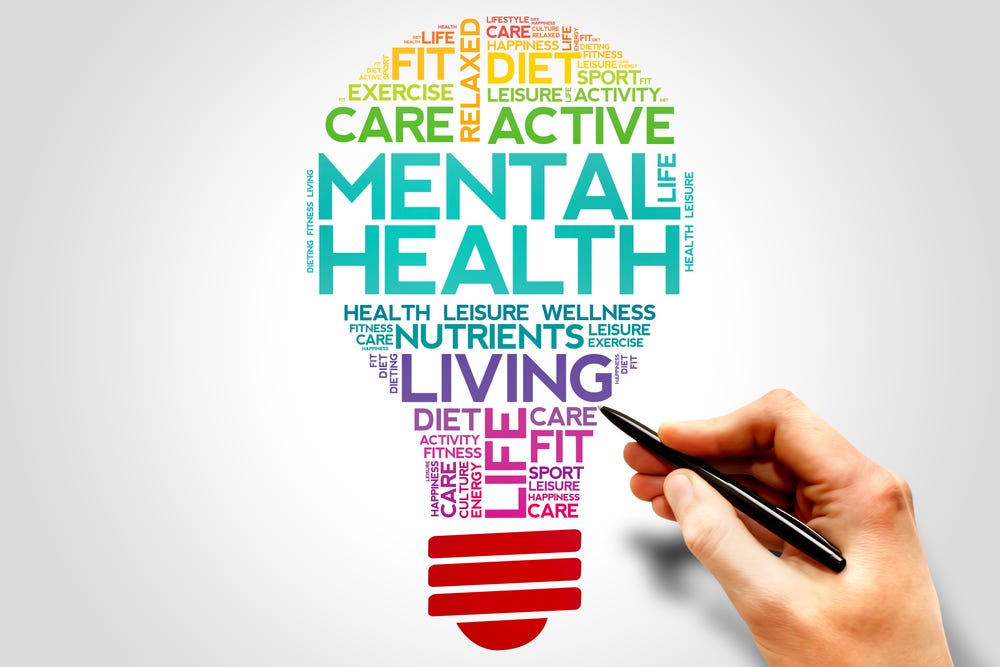
Mental health is crucial. If you aren’t experiencing overall emotional wellbeing, it will keep you from enjoying the things you love, it will put strain on your relationships and it may even cause physical health issues.
Many people are reluctant to get help for their mental health needs. They may be dealing with stigmas, or they may not want to admit they have a problem. Others may feel hesitant because they don’t know what to expect.
This article will review the types of treatments that are commonly used for mental health issues so you can determine which may be right for you.
How the Proper Treatment is Determined
There are various treatments that can be used to make mental health issues more manageable. So how does the therapist tell which is right for you?
Often, they will do a full evaluation. They will ask questions and do examinations to analyze your mental and physical health. This will help them make a diagnosis.
Once a diagnosis is made, they will review therapies to find the ones that are most effective in treating your issue. They may integrate a variety of therapies and change therapies if the ones they are using are not working. Medication may be used to complement therapy and increase wellbeing.
What Type of Therapy is Used to Treat Mental Illness?
Here are some of the treatments that may be prescribed.
Cognitive Behavioral Therapy
Cognitive behavioral therapy is based on the theory that negativity comes from within and is not based on a person’s surroundings. It explores the patient’s psyche and aims to replace unhealthy and often unrealistic thought patterns with positive healthy ones to change behavior. It is used to treat depression, anxiety, eating disorders, bipolar disorders and schizophrenia.
Dialectical Behavioral Therapy
Dialectical Behavioral Therapy is very similar to CBT with one major exception. It aims to help individuals accept unhealthy thought patterns instead of encouraging them to struggle against them. The hope is that the patient will find a balance between acceptance and change.
Eye Movement Desensitization and Reprocessing Therapy (virtual) (EMDR)
EMDR is a common treatment for post-traumatic stress disorder. During the therapy, patients are made to relive unpleasant memories while being exposed to soothing stimuli (such as tapping or musical notes) and performing repetitive eye movements for 20–30 seconds. The goal is to make the patient see their memories in a more positive light.
Exposure Therapy
Exposure therapy is often used to treat obsessive compulsive disorder. People with OCD are obsessed with a specific object or behavior and have an unrealistic view of negative consequences. During exposure therapy, patients are made to face their fears in a controlled environment and methods are suggested to help them cope.
Art Therapy
Art therapy may involve making works of art, creating music, dancing or any other creative outlet. It is meant to soothe anxiety and boost self-confidence. It is often used in combination with science-based therapies.
Interpersonal Therapy
Interpersonal therapy helps the patient improve their social and interpersonal skills. The therapist will work with the patient to evaluate their social interactions and determine negative patterns like aggression or isolation. The goal is to help the patient interact positively with others. It is commonly used to treat depression, but it can also be helpful in issues with social anxiety and anger management.
Mentalization Based Therapy
Mentalizing is a process that helps us better understand ourselves. It is the exploration of our thoughts and feelings, and it plays a big role in how we connect with others. It is effective in treating people with bipolar disorder who often experience an unstable self-image. It encourages mentalizing often focused on the patient’s relationship with the therapist. It allows the patient to develop safe feelings of attachment to boost confidence and increase empathy.
Psychodynamic Therapy
Psychodynamic therapy aims to resolve negative feelings stemming from past experiences. Sessions typically involve open ended questions and free association allowing patients to discuss whatever is on their minds. It allows the patient to identify negative behaviors and their causes so that they may move on to healthier living. It is often used to treat anxiety, depression and borderline personality disorders.
Virtual Therapy
Some people don’t go to therapy simply because they don’t have the time. If you are too busy to squeeze therapy into your day, virtual therapy is an option. A virtual therapy session is very much like any other therapy session, but it takes place over a video conferencing platform. It eliminates a time and money consuming commute making it easy to fit treatment into your life.
Conclusion
Regardless of the type of therapy which may interest you the most, it is important to have these conversations with your primary care provider or a professional counselor/therapist in order to learn about which approach or approaches can help your personal situation. Mental health issues are not easy to deal with, but seeking help is an important first step. Fortunately, there are a variety of therapies that can be used to get to the root of the problem and make it more manageable. Which of these treatments will work best for you? Talk to your primary care provider or professional therapist to learn more.
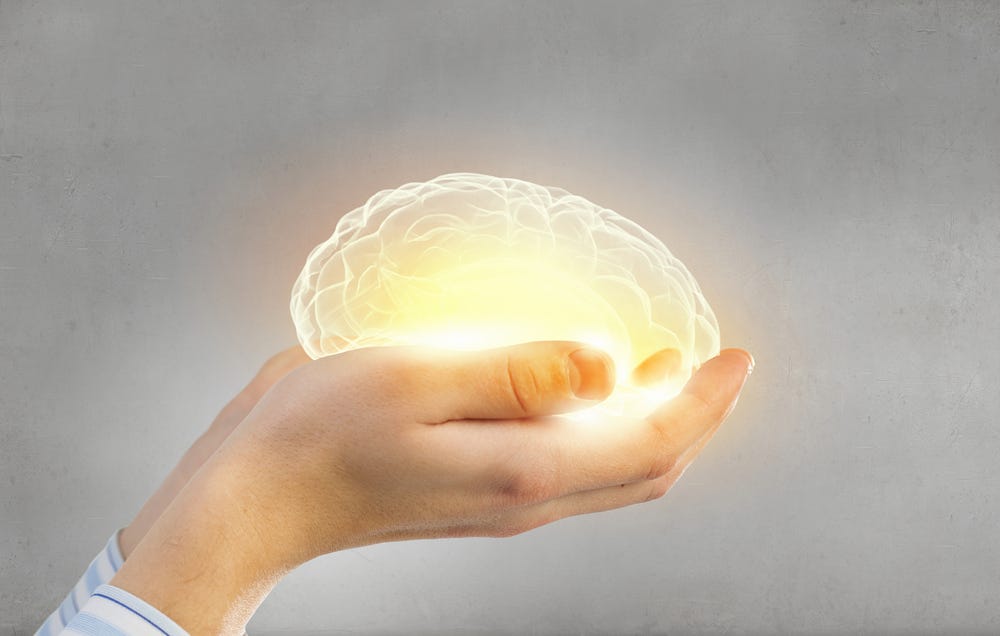
There are many types of treatment that can be used to improve mental health. While it is always essential to consult your mental health professional regarding the right treatment for you, alternative therapies are commonly integrated into the healing process.
Alternative therapies are not considered a part of mainstream care. While they can be used as a primary treatment, they are typically complementary to other types of therapy, such as psychotherapy and medication. They focus on balancing mental, spiritual, and physical wellbeing to provide overall healing.
This article will review the alternative therapies often integrated into mental healthcare so you can determine if they are right for you.
Acupuncture
Acupuncture is an ancient practice with roots in traditional Chinese medicine. It involves puncturing the skin with tiny metal needles. The needles may be accompanied by electrical stimulation to enhance the effects.
It is believed that there are more than 2,000 acupuncture points in the body connected by meridians. When needles are applied, they stimulate the pathways creating energy flow that is said to improve overall health. The treatment may be effective in treating a variety of conditions that are both mental and physical in nature.
Acupuncture’s effectiveness in reducing symptoms of mental illness has been clinically reviewed with mostly positive results. An 8-week study of 151 men and women showed that those that received acupuncture treatment saw a significant improvement in symptoms. Effects were similar to the antidepressant drug fluoxetine.
Other studies showed that acupuncture can reduce depression during pregnancy and reduce migraines caused by depression.
Aromatherapy
Essential oils can be revitalizing, soothing, healing, and more.
Aromatherapy involves using essential oils in massage, including them in baths, or dispersing them throughout the room via a dispenser. The scent emitted may be beneficial in reducing stress and anxiety, which are often characteristics of mental illness.
The treatment has been shown to be effective in treating mental illness, primarily depression. Reviews of previous studies indicate that aromatherapy massage may yield better results than inhalation. However, both can work to some degree.
More studies are needed to determine whether it should be incorporated in a clinical setting.
Herbal Remedies
Medication is often used to reduce mental illness, but it can lead to unpleasant side effects. It can also be challenging to stop taking drugs once your body gets used to them. Herbal remedies may provide wellness boosting effects without the harmful side effects.
Herbs commonly associated with mental health effects include:
● St. John’s Wort: Relieves depression
● Valerian Root: Reduces anxiety
● Passionflower: Reduces anxiety and can work as a mild sedative
● Bach Flower Remedies: Minimizes anxiety and fatigue while boosting concentration and memory
● Sage: Relieves depression and anxiety while improving memory
● Chamomile: Works as a mild sedative
Note many herbal remedies are not FDA approved and may not be safe and effective. It’s best to look for a remedy that has a Traditional Herbal Registration (THR) or a product license (PL) number on the packet.
A PL means the product has been proven to work in medical trials. A THR is for products where there is less evidence that they are effective.
It’s also best to talk to a doctor before taking herbal remedies, especially if you have underlying health conditions or are taking other medications. This is because herbal remedies may have harmful effects when combined with certain medicines or may aggravate other underlying health conditions. Your health care professional will be able to let you know if it’s safe to proceed with integrating a herbal supplement into your health care routine.
Studies have shown that herbal remedies have varying degrees of success in improving mental illness. For example, lavender has been shown to have the potential to reduce anxiety and improve sleep. And while St. John’s Wort has proven to work as well as some anxiety medications in certain studies, it can make symptoms worse when taken in combination with other drugs.
Homeopathy
Homeopathy is based on the idea that a substance that causes certain symptoms can also make them go away. Homeopathic products contain these substances in a watered-down form which is believed to make them more effective.
There are several types of homeopathic remedies that are said to improve mental health and, specifically, to treat anxiety. These include:
● Aconite
● Argentum nitricine
● Arsenicum album
● Calcarean carbonica
● Gelsemium
● Ingnatia
● Kali arsenicosum
● Kali phophoricum
● Lycopodium
● Phosphorus
● Silica
● Stramonium
One study showed that homeopathic medicines were effective in reducing anxiety and depression in women 22–67. But a review of previous studies showed that the available data was insufficient in supporting their use in medical care.
Similar to herbal remedies, your health care provider should be consulted before you begin incorporating any of these remedies into your routine. Many of these remedies also lack FDA approval and could potentially have adverse effects when combined with certain medications or given underlying physical conditions.
Conclusion
There are several alternative treatments that can be integrated into traditional mental healthcare. While studies have shown that many yield positive results, the overall expert opinion is that more research is needed to prove their efficacy. If you are considering adding them to your routine, be sure to talk to your doctor to ensure they are safe before proceeding.
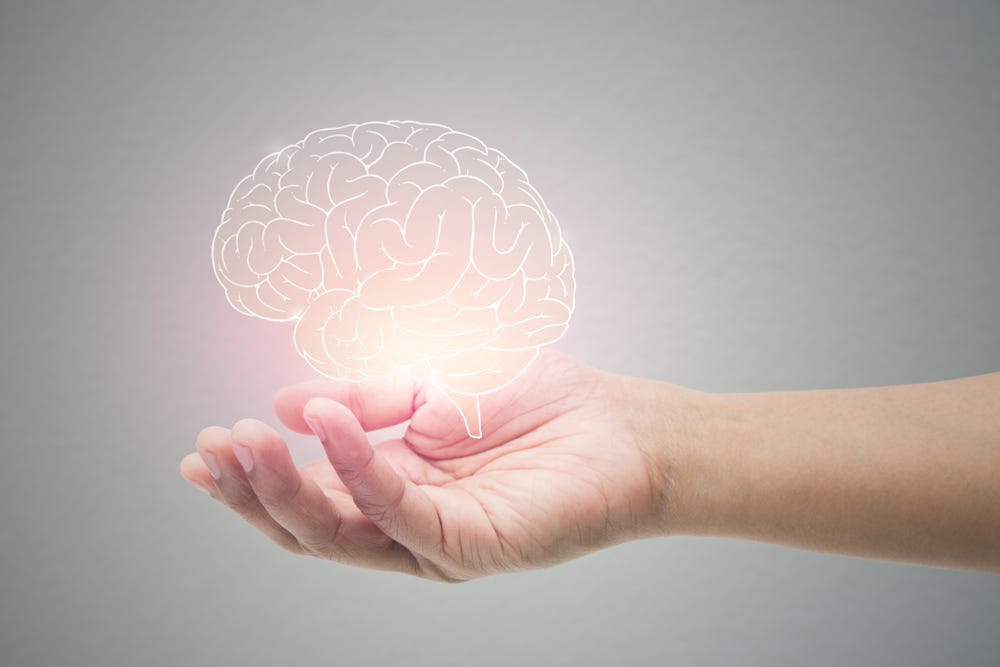
The importance of mental health is becoming more apparent. Society is now realizing how severe emotional distress can lead to physical conditions and potentially even drug abuse and suicide.
As a result, increased measures are being implemented to ensure individuals get the care they need. Technology is playing a major role in making treatments more convenient and accessible. This article will review the virtual platforms that are improving mental healthcare.
Teletherapy and Apps
It can be difficult for patients to come forward and reach out for the help they need. Imagine doing so only to find out they will have to wait weeks just to attend a session. It can get pretty discouraging.
Teletherapy introduces a convenient way for patients to get the care they need, at a convenient time and in a comfortable setting such as their own home.
Research shows that there are mental health professional shortages in certain parts of the country while other regions have an abundance of doctors that treat emotional issues. Teletherapy eliminates location-based limitations. It allows people to access treatment from doctors that may be across the country or across the world.
In addition to therapy sessions online, patients also have access to phone apps such as meditation apps, virtual reality apps, augmented reality apps, and video game technology that can be downloaded for a minimal cost. These have shown to be effective in stimulating the brain to heal itself.
These options can be low-cost and convenient. They make it easy for patients to reach out for the care they need. They eliminate the time and expenses associated with commuting, they are easy to schedule, and they are effective in helping individuals overcome emotional issues.
Digital Pills
Many patients require medication to keep them on track. Without taking this medication, they may engage in dangerous behaviors that hurt themselves and others. Unfortunately, it is not uncommon for people with mental health issues to skip a routine medication due to forgetfulness, side effects or not feeling as if they need to be taking their pills.
Digital pills provide a solution in ensuring patients stay on their meds.
The pills contain indigestible sensors that transmit medical data after the pill is taken. They help medical professionals keep track of when medication is taken so they can assist patients in achieving optimal mental health.
Once ingested, the sensor releases an electric signal when it comes into contact with stomach acid. This works with an adhesive patch placed on the patient’s body that collects information regarding when the pill was taken as well as vital signs such as blood pressure, temperature, and activity levels.
The information is sent to the patient’s smartphone where they can add information about how they are feeling. The app uploads to a secure website where it can be viewed by the doctor.
The doctor can assess the data to determine how the medication is affecting the patient. They can also share it with other providers if the patient grants permission for them to do so.
Virtual Clinical Trials
Clinical trials play a major role in the development of healthcare treatments in relation to both physical and mental issues. During the pandemic, many clinical trials were put on hold to avoid contact between doctors and study participants.
But as time wore on and the pandemic didn’t seem to be going anywhere, clinicians learned to adjust their studies to virtual platforms. Wearables were used to record vital statistics and video conferencing was integrated to determine the effects of medication. The at-home collection of urine and blood samples was also made possible.
Taking clinical trials to a virtual forum made it easier for patients to participate and for doctors to determine treatment effects. It allowed for the continuous development of mental health treatments that are so valuable in pandemic times. It aided in the production of the vaccine and other medications that might end the pandemic for good.
What’s more, virtual studies eliminate locational limitations. This allows researchers to test products on different cultural groups in different areas of the world to determine if genetic traits and environment have an outcome on how treatments interact with the individual.
While clinicians generally study a wide variety of ethnic groups when testing out new products, it can be a costly and time-consuming endeavor. Turning to virtual means reduces costs and produces results quickly so the population can benefit from treatments sooner.
Conclusion
Caring for mental health is so important. Incorporating virtual platforms adds convenience to treatment processes while cutting down on time and expenses. It provides researchers with the data they need to make accurate assessments round the clock.
It is hopeful that technology will continue to play a role in making mental health treatments even more accessible so everyone can get the care they need.

Mental health has long been a sensitive issue. People are often hesitant to speak up about mental health issues they are dealing with because they feel it may cause them to be seen as weak or incapable.
When people are reluctant to speak out, they bottle up their feelings and internalize them. This often makes matters worse and can lead to dangerous behavior, addiction and even suicide.
Fortunately, many individuals are doing their part to break the stigmas of mental disorders so people can get the help they need. This includes several celebrities who have opened up about their own mental health issues in the hopes that they encourage others to do the same. They believe this will help those who need help addressing their mental health to help find the tools they need to lead a healthier, happy life.
This article will highlight some celebrities who have become passionate about advocating for mental health and their contributions to society.
Demi Lovato
Demi Lovato may be the celebrity best known for her efforts to support people dealing with mental illness. The singer and actor has been very vocal about her own struggles with emotional issues. She was diagnosed with bipolar disorder in 2011.
She has since become the spokesperson for a campaign called Be Vocal: Speak Up for Mental Health, an initiative that encourages people with mental health issues to reach out to get the help they need. She also started a Mental Health Fund that provides people with free counseling services during the COVID-19 pandemic.
Lovato says that getting her diagnosis was a relief as it provided her with a way to identify what she was feeling, and seek the guidance and treatment she needed to deal with her emotional issues.
Kristen Bell
Kristen Bell may seem like she has it all, but the 41-year-old actress has been dealing with anxiety and depression since college. In 2016, she wrote an op-ed for Time magazine titled, “I’m Over Staying Silent About Depression,” which helped launch her mental health advocacy efforts.
Bell has continued to make public statements stating the need to reduce stigmas and ensure that more help is readily available. She was quoted as saying, “Mental health check-ins should be as routine as going to the doctor or dentist.”
She says that as soon as she started opening up about her own struggles, they became easier to manage. She advises people to seek out emotional relief by talking about their problems, exercising regularly and taking a time out when pressure gets overwhelming.
Simone Biles
Simone Biles is a seven-time Olympic medalist who recently announced her new role as mental health advocate. She became the center of attention overnight when she withdrew from the US gymnastic team to focus on her emotional issues. When she discovered the awareness her announcement raised, she then realized her potential to advocate for the cause.
Biles is currently performing in a touring show, a dream six years in the making that has finally become a reality. She aims to include a mental health aspect in the show because she knows a good portion of her audience have experienced struggles similar to the ones she has gone through. She wants to show that she is not hiding these matters or pushing them aside.
The athlete stresses the importance of a strong support group and knowing that it’s okay not to be okay. She encourages others to write down their goals and believe in themselves to increase the chances that their dreams will come to fruition.
Justin Bieber
Justin Bieber may seem like a fun-loving party boy, but he has had his share of demons. He has opened up about his mental health journey saying, “I’m struggling to get though the days. I think a lot of people are.”
More than being vocal, the singer has taken action in supporting the cause.
Bieber donated money to fan and college student Julie Coker. Coker has been diagnosed with depression and is president of her school’s chapter of Active Minds, an organization that raises mental health awareness among college students. Bieber gave Coker a $100,000 check that will help her launch her career as a social worker.
Conclusion
Celebrities have a powerful influence on society. It is hopeful that when they come forward about mental health issues, this will encourage others to do the same. This way everyone can get the care and support they need without fearing the stigmas previously associated with seeking help. This is a positive step forward when it comes to reducing the risk of dangerous behaviors associated with mental disorders and helping people lead a happier, healthier existence.
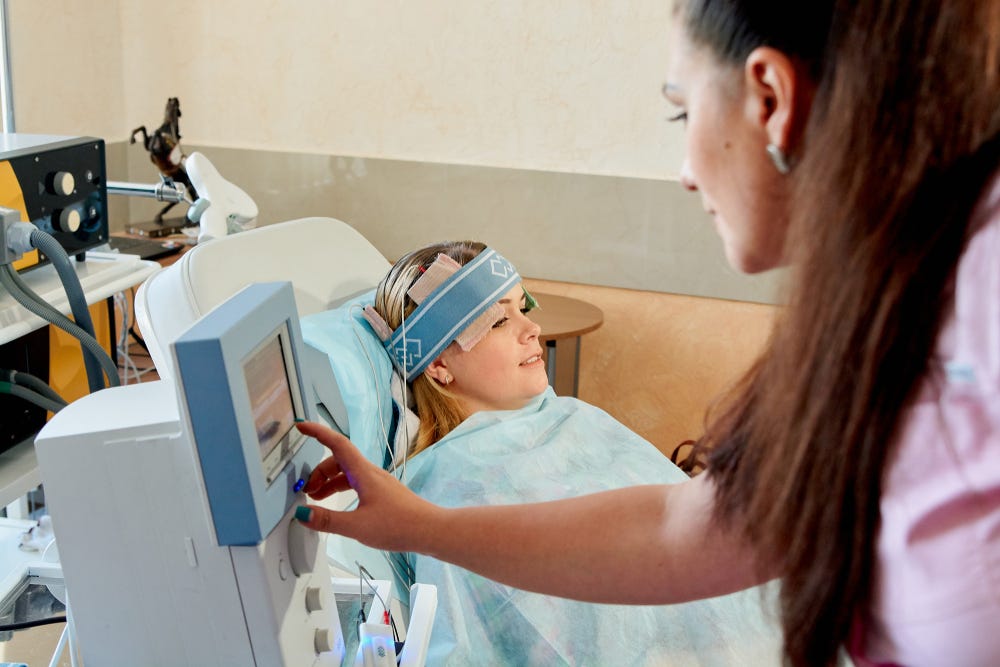
Mental illness is most commonly treated with medication and psychological treatments. But when these are not effective, brain stimulation may be brought in as a complementary therapy. It involves activating or inhibiting the brain with magnets or electricity.
There are several types of brain stimulation that can be used to treat mental illness. This article will provide an overview of the forms of therapy that are available.
Electroconvulsive Therapy (ECT)
ECT is the most used type of brain stimulation therapy. It is used to treat severe forms of depression as well as bipolar disorder and schizophrenia. It can be effective on patients in a catatonic state as well as those that are malnourished due to severe depression.
No one is sure exactly how ECT works, but it is believed to change chemical aspects in the brain to improve mental illness. A patient must be sedated before ECT is administered. Once under, electrodes are placed at precise locations on the head. The electrodes allow an electric current to pass through the brain causing a brief seizure. Because the patient is sedated, they do not feel pain.
The therapy may yield results in the first week for some patients. It can also reduce the chance of relapse when combined with follow-up treatments that include medication and talk therapy.
Vagus Nerve Simulation
The vagus nerve runs from the brainstem through the neck down to each side of the chest and abdomen. It carries messages from the brain to the body’s major organs and plays an important role in sleep, mood, and other functions.
Vagus Nerve Stimulation involves surgically implanting a device called a pulse generator in the upper left side of the chest. It sends 30-second electrical pulses to the vagus nerve, typically about every five minutes. The vagus nerve responds by sending signals to the brain.
The pulse generator works continuously and is powered by a battery that lasts about 10 years. It can be temporarily deactivated by placing a magnet over the area of the chest where it is implanted.
Vagus nerve stimulation was originally developed to treat epilepsy, but it was found to alter levels of neurotransmitters in the brain to improve mood. It is therefore sometimes used to treat severe depression.
Repetitive Transcranial Magnetic Stimulation (rTMS)
rTMS involves using a magnet to activate the brain. Unlike ECT, it can target a specific part of the brain. It has been shown to be effective in treating depression, psychosis, anxiety, and other disorders.
An rTMS session lasts for 30 to 60 minutes and does not require anesthesia. The procedure involves an electromagnetic coil being held against the forehead near the brain. The coil emits short, electromagnetic pulses which pass through the skull and stimulate the nerve cells in the region of the brain being targeted.
Because the stimulation does not reach more than 2 inches into the brain, providers can move it around to treat regions of the brain where it is needed most. Opinions vary regarding which site is best.
Magnetic Seizure Therapy (MST)
MST features aspects of ECT and rTMS. Like rTMS, it uses magnetic pulses instead of electricity to stimulate specific parts of the brain. And like ECT, it aims to produce seizures. Because it produces seizures, patients must be anesthetized during treatment.
Although MST is still in the early stages of testing, it has been shown to be effective in treating major depression and bipolar disorder.
Deep Brain Stimulation (DBS)
DBS was originally developed to reduce tremors, stiffness, and uncontrollable movements in patients with Parkinson’s Disease. However, it has also been found to treat depression and OCD. It is an extreme therapy that requires brain surgery and is only used to treat depression on an experimental basis.
Patients are awake during therapy, but they receive local anesthesia, so they don’t feel any pain. During the surgery, two holes are drilled in the head. The surgeon then sends a slender tube into the brain to place electrodes on specific areas of the brain.
The first area that’s targeted is the subgenual cingulate cortex which has known to be overactive in depression and mood disorders. Electrodes are also placed in other parts of the brain that may vary depending on the illness being treated. For example, when dealing with OCD, they are placed in the ventral capsule, an area of the brain believed to be associated with the disorder.
The electrodes are attached to wires that run inside the body from the head to the chest where a pair of battery-operated generators are implanted. Electrical pulses are continually delivered through the wires. It is believed that the pulses help to reset the part of the brain that is malfunctioning.
Side Effects
It’s important to note that each of these therapies is associated with a variety of symptoms, which may include:
● Disorientation
● Bleeding in the brain
● Stroke
● Movement disorders
● Difficulty sleeping
● Mood changes
● Lightheadedness
It’s important to talk to your medical professional about the risks of any treatment before moving forward.
Conclusion
Brain stimulation therapies are an extreme way to treat mental illness, but they are proving to be effective in severe cases. While they are typically used as a last resort, it is fortunate to know that the alternatives exist. If you feel one of these therapies may be a consideration for you, be sure to consult with your medical professional to discuss the best treatment options for your condition.

There are many arguments that support art as being just as important as any other subject taught in school. One is the benefits that it can have on mental health.
Art has been known to relieve stress, boost self-confidence, aid in communication and improve cognitive function. This article will review the important role art plays in mental health.
A Look at Neuro-esthetics
Anyone who has an artistic side has a firsthand experience with how art can eliminate stress and increase feelings of happiness. But they may not realize how art is affecting their brains.
A 2019 study looked specifically at mindfulness-based art therapy (MBAT) that combines art therapy with heightened awareness techniques regarding ones thoughts and feelings. Biofeedback was used to determine the effects visual art has on the neural circuits and neuroendocrine markers in the brain. Measurements showed that stress and anxiety was reduced providing evidence that MBAT may be an effective treatment for anxiety disorders as well as general anxiousness. It can also reduce anxiety in people with serious medical conditions such as cancer.
A 2016 study also showed that creating art can reduce cortisol levels which are markers for stress. It involved 39 healthy adults who engaged in 45 minutes of art creation. Cortisol levels were measured via saliva samples before and after the activity. In addition to finding lower stress markers, participants also stated that they felt happier after the creative activity.
These studies are a part of mental health research called neuro-esthetics which uses brain imaging, brain wave technology and biofeedback to provide scientific evidence regarding how we react to the arts. It serves as scientific proof as to why we feel better after engaging our artistic abilities.
Art Encourages Mindfulness
Mindfulness is often integrated into mental health therapy. It encourages people to become more involved in the moment so they can appreciate what’s in front of them and forget about the stresses of the past and the future.
Art has the power to immerse us in the present, helping to focus on the activity in front of us and reducing stress factors from outside sources. And the more we engage in art-related activities, the better we become at shifting into a mindful state at other points in our lives. Doing so is effective in producing pleasurable states that are neurochemically rewarding.
To truly engage in a MBAT, artists must accept three strategies.
Don’t Be Afraid of Making Mistakes: As an artist, it’s important to try new things without the fear of making mistakes. A fearful attitude can make the experience stressful defeating the point of the activity.
Use Reusable Materials: Reusable materials such a dry erase markers and Play-dough can easily be wiped away or reshaped. Using them takes the pressure off artists when it comes to making something perfect and permanent.
Limit Language: It is best not to talk when engaging in art. If you are listening to music, choose instrumental pieces. This allows you to give a break to the overworked parts of your brain responsible for speech generation and language processing..
How Art Can Help Mental Health
Here are a few ways art can help improve mental health.
Stress Relief: Art provides a distraction allowing your brain to take a break from the stresses of daily life. It puts you in a meditative state that helps you to put your worries aside.
Boosting Self Esteem: Creating art raises levels of dopamine, a “feel-good” neurotransmitter in the brain. It may help you to adopt a more optimistic outlook overall.
Increased Connectivity: When you engage in a complex activity, it encourages your brain to create new connections between brain cells. The ability to grow these connections and change and adapt is known as brain plasticity. Engaging in art can boost brain plasticity, which can increase psychological and emotional resilience, so you are more resistant to stress.
Increased Feelings of Love, Empathy, and Tolerance: A study of over 10,000 students showed that viewing art can increase feelings of empathy, love, and tolerance. Students who took a one-hour trip to the museum exhibited increased critical thinking skills as well as a deeper sense of empathy for various cultures. Brain scans reveal that the surge of dopamine released when viewing art can produce feelings that are similar to falling in love.
Conclusion
The ability of art to aid mental health should not be ignored. It relieves stress, promotes feelings of tolerance and self-confidence, and increases connectivity to make for emotional resilience and improved learning. What will you be doing to incorporate more artistic activities in your life?
What are the Different Types of Therapy for Mental Health?

Mental health is crucial. If you aren’t experiencing overall emotional wellbeing, it will keep you from enjoying the things you love, it will put strain on your relationships and it may even cause physical health issues.
Many people are reluctant to get help for their mental health needs. They may be dealing with stigmas, or they may not want to admit they have a problem. Others may feel hesitant because they don’t know what to expect.
This article will review the types of treatments that are commonly used for mental health issues so you can determine which may be right for you.
How the Proper Treatment is Determined
There are various treatments that can be used to make mental health issues more manageable. So how does the therapist tell which is right for you?
Often, they will do a full evaluation. They will ask questions and do examinations to analyze your mental and physical health. This will help them make a diagnosis.
Once a diagnosis is made, they will review therapies to find the ones that are most effective in treating your issue. They may integrate a variety of therapies and change therapies if the ones they are using are not working. Medication may be used to complement therapy and increase wellbeing.
What Type of Therapy is Used to Treat Mental Illness?
Here are some of the treatments that may be prescribed.
Cognitive Behavioral Therapy
Cognitive behavioral therapy is based on the theory that negativity comes from within and is not based on a person’s surroundings. It explores the patient’s psyche and aims to replace unhealthy and often unrealistic thought patterns with positive healthy ones to change behavior. It is used to treat depression, anxiety, eating disorders, bipolar disorders and schizophrenia.
Dialectical Behavioral Therapy
Dialectical Behavioral Therapy is very similar to CBT with one major exception. It aims to help individuals accept unhealthy thought patterns instead of encouraging them to struggle against them. The hope is that the patient will find a balance between acceptance and change.
Eye Movement Desensitization and Reprocessing Therapy (virtual) (EMDR)
EMDR is a common treatment for post-traumatic stress disorder. During the therapy, patients are made to relive unpleasant memories while being exposed to soothing stimuli (such as tapping or musical notes) and performing repetitive eye movements for 20–30 seconds. The goal is to make the patient see their memories in a more positive light.
Exposure Therapy
Exposure therapy is often used to treat obsessive compulsive disorder. People with OCD are obsessed with a specific object or behavior and have an unrealistic view of negative consequences. During exposure therapy, patients are made to face their fears in a controlled environment and methods are suggested to help them cope.
Art Therapy
Art therapy may involve making works of art, creating music, dancing or any other creative outlet. It is meant to soothe anxiety and boost self-confidence. It is often used in combination with science-based therapies.
Interpersonal Therapy
Interpersonal therapy helps the patient improve their social and interpersonal skills. The therapist will work with the patient to evaluate their social interactions and determine negative patterns like aggression or isolation. The goal is to help the patient interact positively with others. It is commonly used to treat depression, but it can also be helpful in issues with social anxiety and anger management.
Mentalization Based Therapy
Mentalizing is a process that helps us better understand ourselves. It is the exploration of our thoughts and feelings, and it plays a big role in how we connect with others. It is effective in treating people with bipolar disorder who often experience an unstable self-image. It encourages mentalizing often focused on the patient’s relationship with the therapist. It allows the patient to develop safe feelings of attachment to boost confidence and increase empathy.
Psychodynamic Therapy
Psychodynamic therapy aims to resolve negative feelings stemming from past experiences. Sessions typically involve open ended questions and free association allowing patients to discuss whatever is on their minds. It allows the patient to identify negative behaviors and their causes so that they may move on to healthier living. It is often used to treat anxiety, depression and borderline personality disorders.
Virtual Therapy
Some people don’t go to therapy simply because they don’t have the time. If you are too busy to squeeze therapy into your day, virtual therapy is an option. A virtual therapy session is very much like any other therapy session, but it takes place over a video conferencing platform. It eliminates a time and money consuming commute making it easy to fit treatment into your life.
Conclusion
Regardless of the type of therapy which may interest you the most, it is important to have these conversations with your primary care provider or a professional counselor/therapist in order to learn about which approach or approaches can help your personal situation. Mental health issues are not easy to deal with, but seeking help is an important first step. Fortunately, there are a variety of therapies that can be used to get to the root of the problem and make it more manageable. Which of these treatments will work best for you? Talk to your primary care provider or professional therapist to learn more.